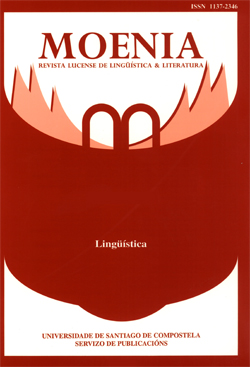Vol 23 (2017), Monográfico. Morfosintaxis y semántica del verbo en español: historia y descripción / Susana Azpiazu, coord.
Submitted: 13-09-2017
Accepted: 15-01-2018
Published: 05-07-2018
With respect to the grammatical status of the subjunctive (SUBJ) there are often distinctions between syntactic function (a compulsory use that allows for no possible alternation with the indicative [IND]) and semantic function (uses that accept possible alternation with the IND.) Apparently, in nominal clauses the syntactic function of the SUBJ manifests itself by way of constructions with determined semantic classes of predicates, for example, volitive (querer), causative (provocar), influence (pedir), contingency (ser possible), and intellectual assessment (ser lógico). Curiously enough, in the northern Slavic languages, (for example, in Polish), which lack the SUBJ and whose verbal system is, just like Castillian Spanish, basically bimodal, almost all of the same semantic classes of predicates (above all the volitives and the ones that influence), are constructed in a compulsory manner as well for the “B” mode — (be it the SUBJ in Spanish or the hypothetical mode in Polish.) In this article, the functions of the SUBJ are analyzed from a descriptive (syntactic-semantic) perspective as well as from a typological comparative perspective. The aim is to try to answer questions about whether the use of the SUBJ is a required consequence of verbal rection (syntactic factor), or the effect of the semantic properties of the subordinate clausal predicates (semantic factor), or an effect of both factors at the same time, and about whether the SUBJ conserves its functional content in the constructions where its use is required, and such.
grammatical status of the Subjunctive, modal alternation and selection, head predicates, syntactic and semantic properties, head predicates and modal selection in northern Slavic languages.






